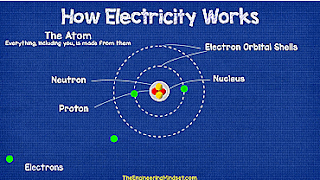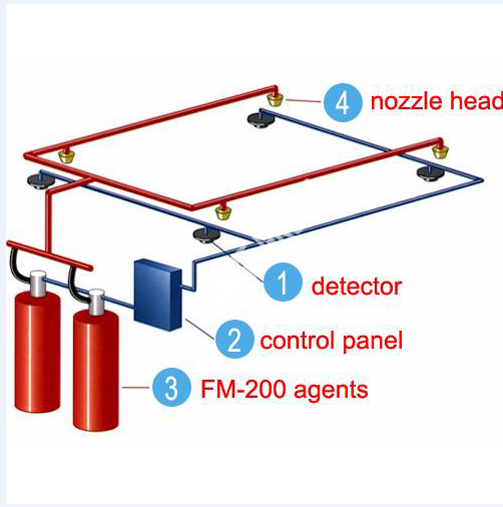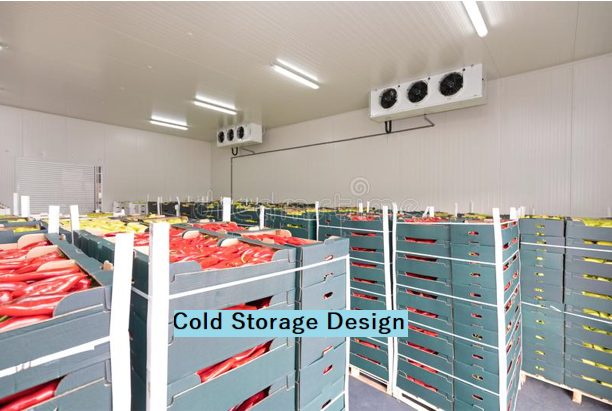How electricity works
How does electricity work. In this article we’ll be learning the basic concept behind how electricity works according to classical theory. we'll cover Atoms, electrons, protons, neutrons then move onto the difference between conductors and insulators; wires and cables, circuits, volts and voltage, currents and amps, resistors, resistance and ohms, induction and inductors, transformers, capacitors and finally the difference between AC and DC power. These are the basics to grasp in order to understand how electricity works before moving onto more advanced areas of electrical and electronic engineering. scroll to the bottom to watch the video tutorial on this subject
THE ATOM
Everything is made from Atoms, including you! Different materials have different types of atoms. At the centre of an Atom is the Nucleus, this houses two particles known as the Neutron and Proton. The Neutron has no electrical charge but the Proton has a positive electrical charge.
Surrounding the Nucleus are different layers of orbital shells which act like flight paths for another type of particle known as the electron. The electrons travel long these paths much like satellites orbit around our planet, except that the electrons travel at almost the speed of light.
The negative charge of the neutrons is attracted to the positive charge of the Proton which keeps the electrons in orbit. Each orbital shell can hold a set number of electrons. The number of Protons, Neutrons and Electrons an Atom has tells us which material it is and the combination is unique for each material.
Atoms hold onto their electrons tightly but some materials will hold onto their electrons more tightly than others. The outer most orbital shell is known as the Valance shell and in this shell some materials will have loosely bound electrons which can float to other Atoms.
Conductors and insulators
Materials which can pass electrons are known as “Conductors” meaning they can conduct electricity. Most Metals are conductors. Atoms which do not have free electrons are known as insulators, materials like glass and rubber are good examples of this.
We can combine Conductors and Insulators together to safely use electricity.this is done by surrounding the conductor with an insulator, this allows electrons to flow but it restricts where they can flow to. This is how a cables and wires work.
Wires and Cables
If we look inside a slice of Copper cable we would see the free electrons of the atoms move from one atom to another, however this occurs randomly in any direction.
If the slice of cable were then connected in a closed circuit to a source of power such as a battery, then the voltage will force the free electrons to move and this will cause them to all flow in the same direction, to try and get back to the other terminal of the battery.
Circuits
The term circuits refers to a route which the electrons can flow along to get between the two terminals of the power source (Positive and Negative).
When a circuit is closed then electrons can flow from one terminal to the other. When a circuit is open then there is a gap in the circuit so electrons can’t flow.
We can place electrical components in the path of the free electrons which flow in a circuit. This will force the electrons to flow through the component and this can be used to perform work such as generate light.
Volts and Voltage
Voltage is a pushing force of electrons in a circuit, much like pressure in water pipe. The more pressure you have the more water can flow. The more voltage you have the more electrons can flow.
A Volt is a Joule per Coulomb. A Joule is a measurement of energy or work. A Coulomb is a group of flowing electrons.
A 9V battery can provide 9 Joules of energy, in the form of work or heat, per group of electrons that flow from one terminal of the battery to the other. In this case the electrons from one terminal of the battery, through the L.E.D bulb and then into the other terminal of the battery. Therefore 9 Joules of light and heat is produced by the bulb.
Current, Amperes and Amps
Current is the flow of electrons. When a circuit is closed then a current of electrons can flow and when a circuit is open then no current can flow. We can measure the flow of electrons just like you can measure the flow of water through a pipe.
To measure the flow of electrons we use the unit of Amperes or Amps for short. 1 Amp means 1 Coulomb per second and one coulomb equals 6,242,000,000,000,000,000 electrons per second. This is an extremely large number which is why they are grouped together and called Amps.
Resistors and Resistance
Resistance is a restriction to the flow of electrons in a circuit. Wires which carry the current will naturally have some resistance. The longer the wire the greater the resistance. The thicker the wire the less the resistance. The resistance to the flow of electrons is different for each material, the temperature of the material will also affect the level of resistance.
Electrical circuit use specially designed components known as resistors to purposely restrict the flow of electrons. This is used to protect other electrical components from receiving too much current and it can also be used to generate light and heat such as in an incandescent light bulb.
Resistance occurs when electrons collide with atoms. The number of collisions varies by material, some materials such as Iron will have a very high rate of collisions whereas other materials such as copper has much fewer collisions.
When collisions occur the atoms generate heat and at a certain temperature the material will then start to produce light as well as heat, which is how the incandescent lamps work.
Inductors and induction
When a wire is wrapped in a coil, it will produce a magnetic field as the current passes through it. The cable would naturally create the magnetic field, its just intensified by the shape of the coil. By wrapping the wire in a coil, the magnetic field becomes so strong that it starts to affect the electrons within the wire
We can increase the intensity of the magnetic field simply by wrapping the wire around an iron core. We can increase the number of rotations within the coil and we can also increase the amount of current passing through the circuit to produce larger and stronger magnetic fields. This is how electromagnets work, its also the basis of how induction motors work. Click here for more information of the working principle of induction motors.
When a magnetic field is passed across a coil of wire, it will induce a voltage into the wire caused by an induced electromotive force which is pushing the electrons in a certain direction. If the coil is connected to a circuit this will cause a current to flow. This is the basis of how an AC generator works and the power available in the plug sockets of your home was produced in a very similar way.
Transformer
Transformers are a combination of all the points we’ve covered so far in this article. We can create two separate circuits and use a transformer to induce current from one circuit into the other.
By generating an AC current in a closed circuit and passing this current trough a coil, which is in close proximity to another coil in a separate closed circuit, we can create a transformer and induce a current from the first (primary) circuit into the second circuit.
Transformers can be used to increase or decrease the voltage between the primary and secondary circuits simply by changing the number of coils on either side.
Capacitors
Capacitors force positive and negative charges to separate across two plates, when it is connected to a power supply. This causes a build up of stored electrons within an electric field. When a power supply is cut or interrupted these charges will then be released where they will then meet up and flow again. This provides a power source by only very briefly (seconds) as it will only last until the separated charges have met up again. This is slightly similar to a battery except it can’t maintain a power supply for as long.
Capacitors are very common and can be found in pretty much every electrical circuit.
AC and DC
There are two types of power in use which are Alternating Current (AC) and Direct Current (DC)
Alternating current simply means the current flow backwards and forwards in a circuit as the terminals are constantly reversed. This is a bit like the tide of the sea, it goes in and out repeatedly. Alternating current is the most common type of electrical power and this is the type of power available in the power sockets of your home.
Direct Current simply means that the current flow directly in only one direction. This is what’s provided from batteries and Photovoltaic panels etc. This is most commonly used in portable electrical goods.
We can convert between AC and DC using inverter, this is how the AC power from our household power sockets can be used to charge our mobile phones which use DC power.
Thank concludes this article for the basics of how electricity works. Below is a video tutorial on the subject with more information and animations.
DOWNLOAD THE VIDEO





















2 Comments
asdgfhgjkjbl
ReplyDeleteThis information is meaningful and magnificent which you have shared here about the Electricity Work. I am impressed by the details that you have shared in this post and It reveals how nicely you understand this subject. I would like to thanks for sharing this article here. 24V DC Generator Online
ReplyDelete